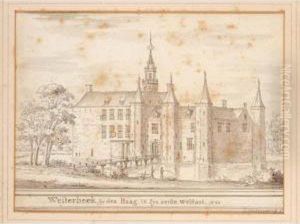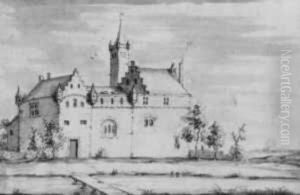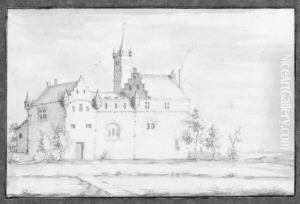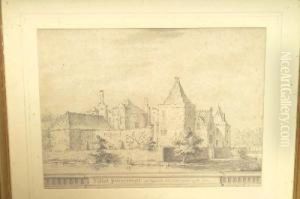Jacobus Stellingwerf Paintings
Jacobus Stellingwerf was a Dutch artist and engraver, known primarily for his detailed and accurate depictions of landscapes, buildings, and maritime scenes. Born in 1667 in the Netherlands, Stellingwerf emerged during a period rich in Dutch artistry, falling within the Dutch Golden Age's later years. This era is celebrated for its remarkable output in paintings, engravings, and drawings, with a strong emphasis on realism, attention to detail, and a deep appreciation for the beauty of everyday life and the natural world.
Stellingwerf's contributions to Dutch art were significant in the realm of topographical drawings and engravings. He had a keen eye for detail and an exceptional ability to capture the essence of the landscapes and architecture he depicted. His works serve as valuable historical records, offering insights into the appearance of various Dutch towns, buildings, and countryside scenes in the late 17th and early 18th centuries. He was particularly adept at rendering buildings with accuracy, which made his works sought after for their documentary value as well as their aesthetic appeal.
Throughout his career, Stellingwerf was also involved in producing views of estates and gardens, which were popular among the wealthy elite of the Netherlands during this period. These commissions allowed him to showcase his skill in portraying the intricate designs of formal gardens and the grandeur of estate homes, contributing to his reputation as a meticulous and talented artist.
Jacobus Stellingwerf's death in 1727 marked the end of a career that had enriched Dutch visual culture. His legacy is preserved in numerous collections and museums, where his works continue to be studied and admired for their historical significance and artistic merit. Through his detailed engravings and drawings, Stellingwerf has provided future generations with a window into the Dutch landscape and architectural heritage of his time.



